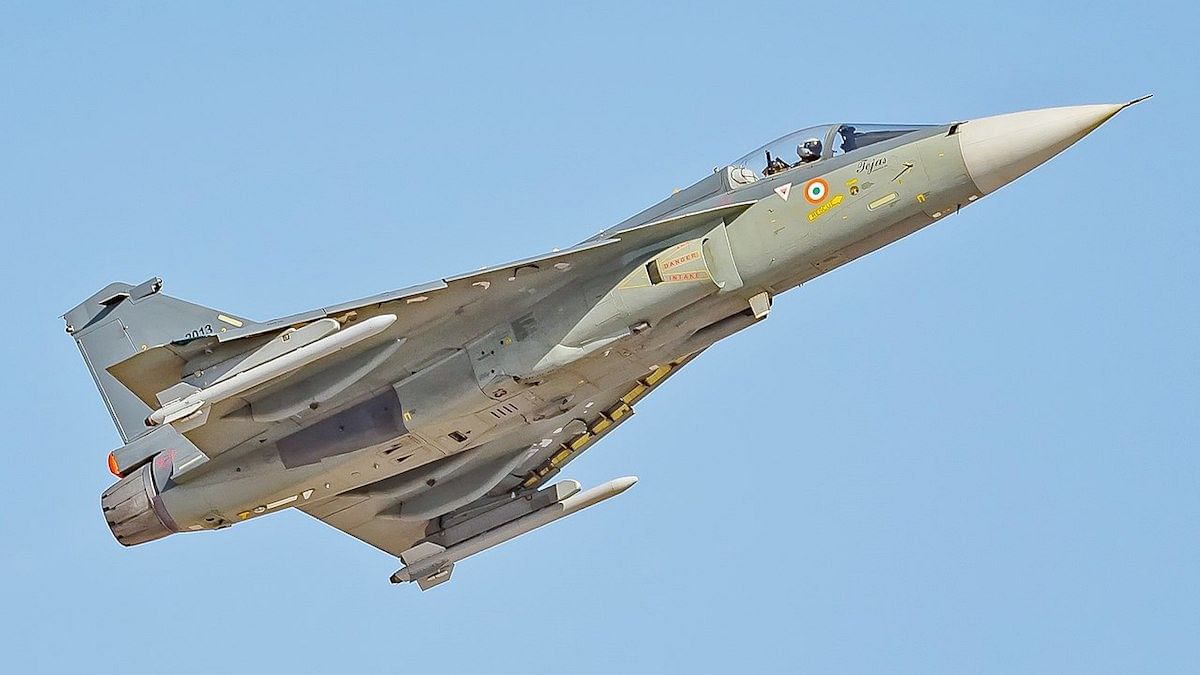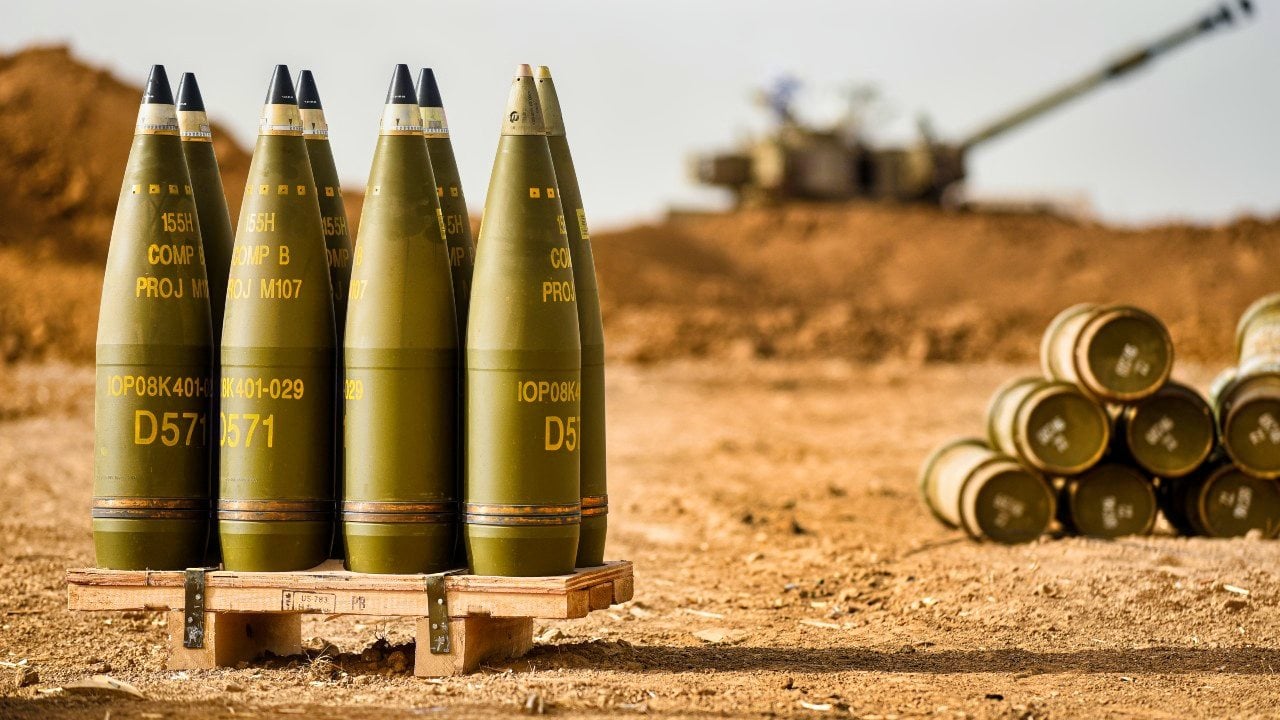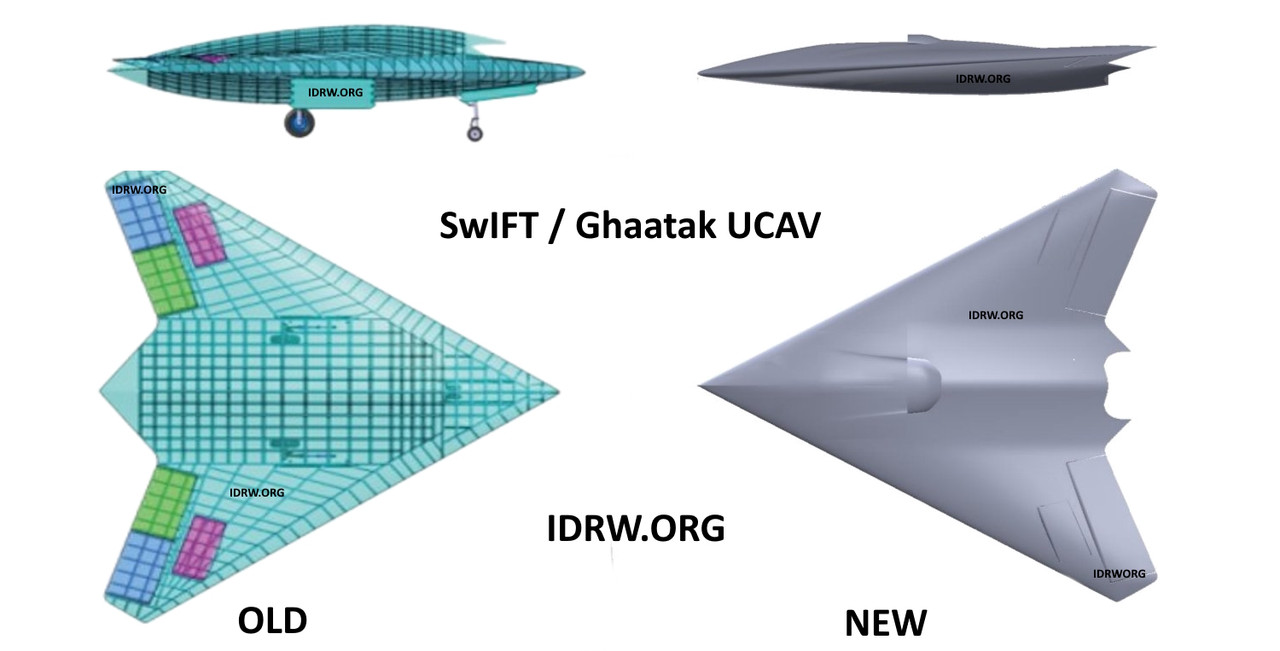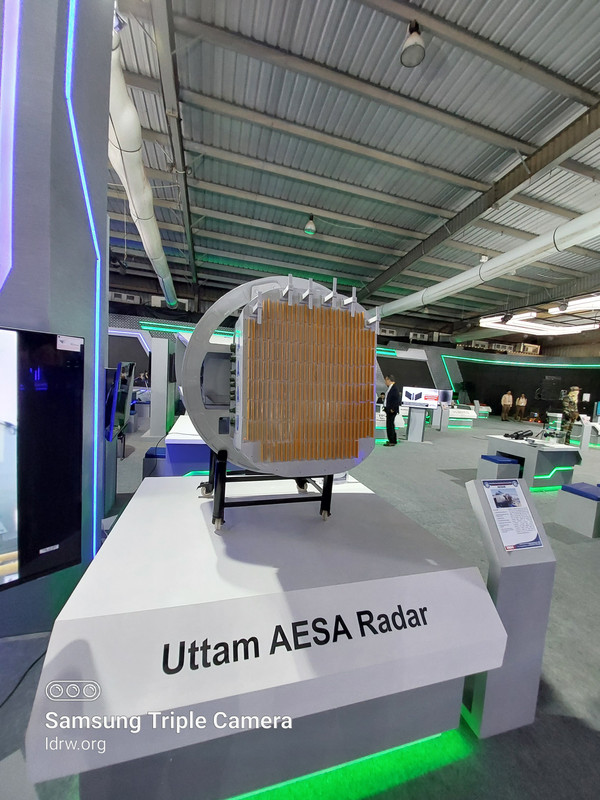SOURCE: RAUNAK KUNDE / NEWS BEAT / IDRW.ORG

The Indian Navy is poised for significant expansion with the anticipated clearance from the Ministry of Defence (MoD) for the development of a second aircraft carrier. This new vessel, modelled after the indigenously built INS Vikrant (displacement over 44,000 tons), will bolster the Navy’s capabilities in safeguarding India’s maritime interests.
However, the Navy’s ambitions extend beyond the second carrier. Discussions are ongoing regarding the development of a third, even larger carrier, boasting a displacement exceeding 65,000 tons. This potential addition to the fleet underscores India’s strategic vision for a robust naval presence in the region.
Continue readingSOURCE: RAUNAK KUNDE / NEWS BEAT / IDRW.ORG
)
India’s indigenously developed Zorawar Light Tank is gearing up for a series of stringent trials to assess its capabilities in diverse terrains and combat scenarios. The tank, currently housed at L&T’s Hazira facility, will initially be transported to the Combat Vehicles Research & Development Establishment (CVRDE) in Avadi for comprehensive testing of its primary 105mm gun.
Subsequently, the Zorawar will be moved to Chandigarh for onward transportation to the Mahe Field Firing Range (MFFR) at Nyoma, strategically located near the India-China Line of Actual Control. This location will serve as the proving ground for the tank’s performance in high-altitude, challenging conditions during the upcoming winter trials.
Continue readingSOURCE: AFI

India and Brazil are on the cusp of finalizing a Memorandum of Understanding (MoU) to collaborate on the local maintenance of Scorpene-class submarines. This strategic partnership aims to leverage Brazil’s extensive experience in submarine maintenance to bolster India’s naval capabilities.
Recent discussions between a high-level Brazilian delegation, led by the Commander of the Brazilian Navy and the Commander of the Armed Forces, and Vice Admiral Sandeep Naithani, Chief of Materiel, centered on this critical aspect of naval cooperation. Brazil’s proven expertise in the domain offers India a unique opportunity to expedite its submarine maintenance capabilities.
Continue readingSOURCE: AFI

In a display of international cooperation and diplomatic finesse, the former Prime Minister of Bangladesh, Sheikh Hasina, was safely escorted to India amidst escalating unrest in her home country. The aircraft, a Lockheed C-130 Hercules with the call sign AJAX1431, carried Sheikh Hasina from Dhaka to Hindon Air Base near Delhi, under the protective watch of the Indian Air Force.
Over the past few weeks, Bangladesh has witnessed a surge in student-organized protests. Initially peaceful, these demonstrations have tragically turned deadly, necessitating urgent action to ensure the safety of key political figures. Sheikh Hasina, a prominent leader with a significant political legacy, faced heightened risks, prompting a coordinated effort for her evacuation.
Continue readingSOURCE: AFI

China’s People’s Liberation Army Navy (PLAN) has bolstered its arsenal with the YJ-18, a new family of anti-ship cruise missiles designed to challenge regional adversaries. This article delves into the YJ-18’s origins, capabilities, and potential future variants.
The YJ-18’s development timeline remains somewhat murky. While inspired by the Russian 3M-54E Club missile, it’s unclear if its design stems from collaboration or independent engineering. Public mentions surfaced around 2009, with testing concluding in 2013 and official service commencing in 2014.
Continue readingSOURCE: AFI
:quality(70)/cloudfront-us-east-1.images.arcpublishing.com/archetype/S5M7BYWEC5HWTGOIO5RPIMKDOM.jpg)
South Korea’s ambitious aerospace project, the KF-21 fighter jet, has taken a significant leap forward with the commencement of production announced by the Defense Acquisition Program Administration (DAPA) on Wednesday. This milestone signifies a major boost to the country’s defense capabilities and its pursuit of self-reliance in the aviation sector.
The momentous occasion was celebrated at the headquarters of Korea Aerospace Industries (KAI), the jet’s manufacturer, located in Sacheon, South Korea. The ceremony marked the assembly of the very first production model of the KF-21, a testament to the tireless efforts of engineers and technicians involved in the project.
Continue readingSOURCE: IDRW.ORG TEAM
In a significant development, Brazil has expressed keen interest in acquiring India’s indigenously developed Akash missile system. Brazilian Delegation already has witnessed live Demonstration of the India’s Akash Missile System in India and soon it will be asking India to send Financial bid for India’s Akash Missile System.
This comes on the heels of India’s successful export of the Akash to Armenia in a substantial ?6,000 crore deal. The Akash, a surface-to-air missile system, has garnered global attention for its advanced capabilities and proven effectiveness. Its ability to intercept multiple aerial targets simultaneously has made it a sought-after defense asset.
Continue readingSOURCE: IDRW.ORG TEAM

Israel Aerospace Industries (IAI) is keen on expanding its footprint in India by establishing a passenger-to-freighter (P2F) conversion facility and an engine maintenance, repair, and overhaul (MRO) center. The company is in advanced discussions with Hindustan Aeronautics Limited (HAL) and another undisclosed Indian firm to set up the P2F conversion facility within the next two years.
IAI envisions India as a strategic location for these operations due to the burgeoning demand for air cargo services globally. The company highlights the potential of converting wide-body aircraft like the Boeing 777 into freighters, which can carry up to 100 tons of cargo. This capacity surpasses the current limitations of twin-engine wide-body freighters, which typically handle around 60 tons.
Continue readingSOURCE: AFI

Pakistan has significantly bolstered its aerial surveillance capabilities with the recent acquisition of another Saab 2000 Erieye Airborne Early Warning and Control (AEWC) aircraft. This addition brings the total number of Swedish-made AEWC aircraft in the Pakistan Air Force (PAF) arsenal to an impressive nine.
The new Erieye, which entered service alongside other recently acquired assets like J-10C fighter jets and C-130H transport aircraft, is equipped with an advanced Active Electronically Scanned Array (AESA) radar system. This cutting-edge technology grants the aircraft an extended detection range of up to 450 kilometers, providing a crucial advantage in aerial warfare.
Continue readingSOURCE: AFI

The upcoming Exercise Tarang Shakti is set to witness the Indian Air Force’s (IAF) Light Combat Aircraft (LCA) Tejas in a challenging role. Positioned as part of the Red Team, the aggressor squadron, the Tejas will be tasked with simulating attacks on the friendly forces, the Green Team.
Leveraging its small radar cross-section (RCS) and agile maneuverability, the Tejas is expected to pose a significant challenge to the opposing forces. The aircraft’s compact size and semi- reduced RCS features make it difficult to detect in Within Visual Range (WVR) combat and on radar, except at extremely close distances.
Continue readingSOURCE: AFI

The burgeoning demand for 155mm artillery shells from European nations has inadvertently propelled India’s private sector into a manufacturing behemoth. Domestic companies, once primarily focused on exporting empty shells, have significantly ramped up production to meet the growing global appetite for this critical munition.
India is poised to witness a quantum leap in its 155mm shell-making capacity, with the private sector alone projected to produce over 3 lakh shells annually by the financial year 2027. This staggering figure excludes the output of public sector undertakings, underscoring the meteoric rise of the domestic industry.
Continue readingSOURCE: AFI

The Central Industrial Security Force (CISF) is set to bolster its surveillance capabilities with the procurement of 605 units of 8x30R binoculars. This strategic move aims to equip its personnel with advanced tools for effective monitoring and response.
The new binoculars will provide CISF personnel with enhanced visibility and clarity, enabling them to observe and analyze situations with greater precision. This is expected to significantly improve the force’s ability to detect potential threats and respond effectively to security challenges.
Continue readingSOURCE: AFI

In a resounding display of naval prowess, INS Shivalik has clinched the coveted RODEO Trophy at the prestigious RIMPAC24 Naval Gunfire Support Competition. The mega-event, which saw the participation of 25 nations, was a fierce battle for supremacy.
INS Shivalik’s victory is a testament to the Indian Navy’s exceptional gunnery skills and precision. The ship demonstrated unparalleled accuracy in delivering ordnance onto the target, outshining its competitors.
Continue readingSOURCE: RAUNAK KUNDE / NEWS BEAT / IDRW.ORG

DRDO’s Stealth Wing Flying Testbed (SWiFT) is undergoing a significant redesign as India pushes the boundaries of unmanned aerial vehicle (UAV) technology. The latest iteration of the SWiFT, a crucial stepping stone to the larger Ghatak UCAV, features a dramatic departure from its predecessor. The most noticeable changes are in the aircraft’s rear exhaust and air intake systems.
The latest iteration of SWiFT showcases dramatic changes in its aerodynamic profile. The most prominent alterations are in the exhaust and inlet designs. The earlier rounded and hooded rear exhaust has been replaced with a radical new design, expected to enhance stealth characteristics. Similarly, the tridiagonal engine inlet has been transformed into a U-shaped intake, repositioned towards the middle of the fuselage.
Continue readingSOURCE: RAUNAK KUNDE / NEWS BEAT / IDRW.ORG

The Indian Defence Research and Development Organisation (DRDO) has initiated a critical process to identify a production partner for the next-generation Virupaksha radar. This cutting-edge system is set to revolutionize the capabilities of India’s Sukhoi-30MKI fighter jets, replacing the currently used Russian-made NIIP N011M Bars (Panther) radar.
The Virupaksha radar represents a significant leap in indigenous defence technology. It builds upon the success of the Uttam Mk2 AESA Fire Control Radar (FCR) developed for the Tejas MkII program. This upscaled variant boasts a larger AESA antenna with an increased number of transmit-receive modules (T/R Modules) – estimated to be between 1200 and 1400, compared to the Uttam Mk2’s 900+. This translates to enhanced capabilities in simultaneously searching, detecting, tracking, and engaging multiple air and surface targets.
Continue reading